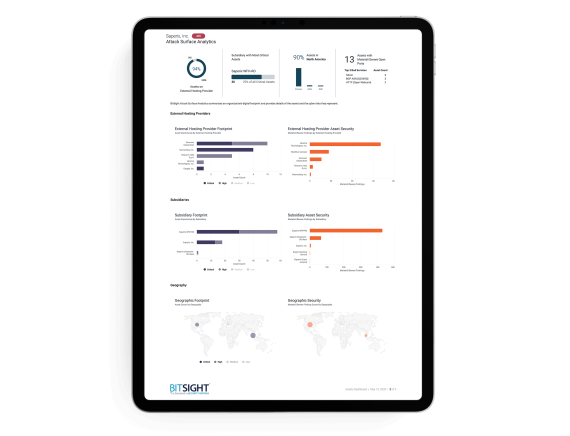Request your free custom report and see how you can start reducing your cyber risk exposure across your digital ecosystem: cloud assets across all geos & subsidiaries; discover shadow IT; security risk findings; and more!
3 Tips for Cyber Risk Mitigation that Drive Operational Efficiencies

Investments in digital initiatives are essential to success. But, according to Accenture, 79% of organizations are adopting new and emerging technologies faster than they can address security issues. The finding isn’t surprising. While the ongoing wave of digital transformation opens exciting opportunities for innovation, it also widens your attack surface.
This means that successful cyber risk mitigation is more important than ever. But as security budgets decrease, your organization needs to find ways to do more with less. This requires a rethink of traditional methods of mitigating risk and, where possible, the use of automation.
Let’s look at three best practices for effective cyber risk mitigation that will drive operational efficiencies in your risk management processes.
Understand your expanding attack surface
Your digital footprint is a complex environment that includes cloud service providers, shadow IT, and remote work devices, making it hard to identify where risk lies hidden.
Instead of undertaking a time-consuming inventory and manual cyber risk assessment of your IT infrastructure, use an attack surface analytics tool to discover the location of your digital assets quickly and automatically.
You’ll gain visibility into assets broken down by cloud provider, geography, business unit, and remote offices – and the corresponding cyber risk associated with each. You can even discover shadow IT and visualize areas of disproportionate risk – such as a misconfigured web application firewall that protects sensitive data.
Cyber risk isn’t confined to your digital ecosystem. As recent large-scale data breaches show, your supply chain can leave your organization vulnerable to cyberattack. To reduce that threat, use a third-party risk management solution to pinpoint connections between organizations in your vendor ecosystem, including business partners and potentially risky fourth parties. With this insight, you can better evaluate and select vendors and continuously monitor for risk in your extended digital supply chain.
Act proactively, not reactively, for rapid cyber risk mitigation
When your security team identifies a cyber risk, rapid mitigation should follow. But in today’s “new normal” security professionals are inundated with alerts, many of which prove to be false negatives. This leads to greater consumption of manpower, staff burnout, and the potential for real security risks to fall through the cracks.
Automating security processes can help teams take a more proactive approach to cyber risk mitigation.
For instance, instead of responding to every alert in the same manner, you could use a solution like Bitsight for Security Performance Management (SPM) to get one step ahead of threat actors. Bitsight SPM automatically and continuously provides insight into the vulnerabilities facing your organization – such as unpatched systems, misconfigured software, open access ports, and compromised systems – so you can take swift action to allocate security resources where they’re needed most.
Continuously adapt your cyber risk mitigation program
Continuous improvement should be the goal of any board or C-suite. But identifying the optimal course of action to improve your cybersecurity risk posture isn’t easy. Bitsight Forecasting can help.
With Bitsight Forecasting, you can model different scenarios and paths of remediation to project future security performance. Get answers to difficult yet critical questions about where to spend security budgets, what activities will quickly reduce risk, and whether technology implementations should be changed.
Armed with this information, you can make more informed decisions about the strategy and resources needed to improve your security posture. You can also track your progress to determine the impact of program changes, update executives and the board, and ensure your organization hits its goals.
Bitsight also helps you determine the security posture your organization should strive to achieve. Bitsight Peer Analytics is a powerful tool that delivers unprecedented visibility into the relative performance of your security program compared to your peers. Benchmark your program against other organizations of similar size or in your industry, so you can make informed, comparative decisions about where to focus your cybersecurity efforts to achieve continuous improvement — and where to advocate for increased resources.
Effective cyber risk mitigation depends on data-driven insights
A common theme of each of these tips is the need for reliable, easily accessible, and understandable data. Each security performance management tool recommended here works together to deliver the data-driven insights, context, and visibility you need to get the most out of your security investments and prevent a potentially damaging breach or incident.
Learn more about ways you can get the most out of your security investments by enriching the threat intelligence you’re already gathering.
